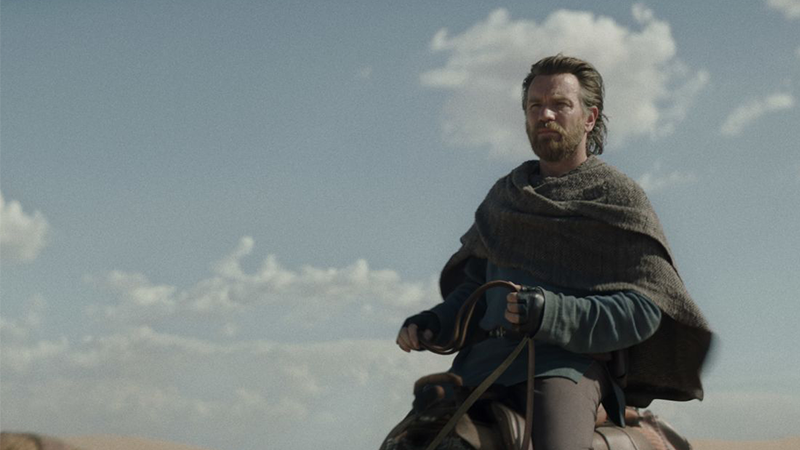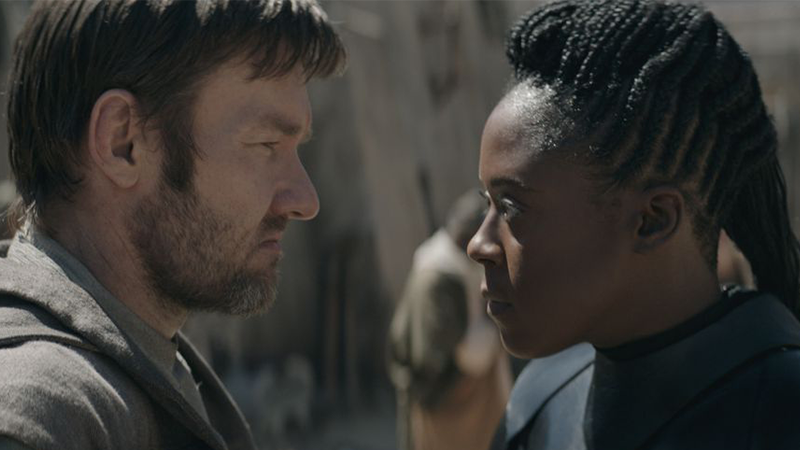On the lava planet of Mustafar, a Jedi master battles his apprentice. Emperor Palpatine’s words, “Execute Order 66,” echo across the galaxy as the Jedi are hunted down and killed. The Jedi master cuts off his apprentice’s arm and legs, leaving him to burn. The apprentice survives, suited with a life-sustaining suit of armor and becoming known to the galaxy as Darth Vader. The master is forced into exile on Tatooine, where he must watch over the apprentice’s son, Luke Skywalker. The master’s name? Obi-Wan Kenobi.
RELATED: Star Wars: The Bad Batch Gets Explosive Season 2 Trailer and Release Window
Ten years after these events, we have the story of our newest Disney+ miniseries set in the Star Wars galaxy, with Ewan McGregor reprising his role from the prequel trilogy. The first two episodes are an absolute delight, offering everything fans have waited for from this show and more. As the desert sands blow the name of the iconic Jedi master onto the screen, audiences everywhere are in for a treat as they get a look at Tatooine during the height of the Galactic Empire’s power. The series premiere offers a story that we never knew we needed, but one that has the potential to be one of the best installments in this ever-growing franchise.
Part I first introduces us to the antagonists. The writing is on point, with each villain feeling distinct and memorable. The Fifth Brother (Sung Kang) is the cold enforcer, the Third Sister (Moses Ingram) is the reckless killer searching for Kenobi, and the show reintroduces us to the Grand Inquisitor (Rupert Friend), the ruthless Jedi hunter who first appeared in Star Wars: Rebels. The dynamic between them is fascinating, as the Grand Inquisitor holds the Third Sister on a leash, stopping her from killing a Jedi named Nari (Benny Safdie).
We are soon reintroduced to McGregor as the famous Jedi who now goes by Ben Kenobi. The teleplay does the character justice, as we see his monotonous life of solitude on Tatooine as a stark contrast to his thrilling days as a Jedi master. His failure to save Anakin has left him a defeated, exiled Jedi, similar to Luke’s portrayal in Star Wars: The Last Jedi. He refuses to help Nari as he has left the life of a Jedi behind him and is dedicated to watching over Luke. The conflict between Kenobi and Owen Lars (Joel Edgerton) is investing, as Owen has good reason to want Kenobi out of Luke’s life, which remains consistent with how Owen behaves in Star Wars: A New Hope.

What follows is the start of the main storyline that was hidden from the marketing: the introduction of a young Princess Leia (Vivien Lyra Blair). Everyone expected McGregor to be phenomenal in reprising his role as Kenobi, but few anticipated the return of one of the most famous characters in the franchise, portrayed superbly by a young child actress. Blair captures all of Leia’s wit and intelligence, particularly in a scene where she tells off her cousin for being disrespectful to a droid. Leia’s tendency to think for herself and play by her own rules is excellently written.
The chase scene when Leia gets kidnapped is intense but also feels like the least well-directed scene in the show, as there are a lot of handheld camera angles that feel like basic, unplanned coverage. However, the rest of the episode continues to improve as Kenobi realizes he must help his old friend get his daughter back. He digs through the sand and recovers two lightsabers: one belonging to Anakin and one belonging to himself. The first episode closes with him walking towards a freighter with a lightsaber as the music by John Williams and Natalie Holt swells, sending him on the journey.
At its core, the story feels a lot like the classic “aging, grizzled hero is reluctantly sent back into action for one last adventure where he must battle his past demons” idea. However, director Deborah Chow brings a unique flavor to that idea as the first episode doesn’t feel like an action-adventure. The show also doesn’t have the Space Western vibe of The Mandalorian or the crime drama of The Book of Boba Fett. Instead, Chow hones in on something original, telling a story that feels like quintessential Star Wars with a tone that almost resembles the original trilogy.
Part I made the fascinating choice of showing Alderaan years before the planet fell victim to the Death Star, illustrating the world where Leia was a princess. Part II continues to expand the galaxy by taking us to Daiyu, a gritty, lived-in underworld where Kenobi investigates in search of Leia’s whereabouts. The storyline resembles Taken, and is such a fresh look at a galaxy audiences have been familiar with for 45 years. The second episode also brings in Kumail Nanjiani, fresh off his Marvel stint in Eternals, as a new character named Haja Estree, who gets some humorous moments as a hustler pretending to be a Jedi.
As Kenobi rescues Leia and does everything he can to keep her safe, the show cements a purpose for its existence. While it may have appeared initially that the show would be unnecessary nostalgia-bait that undermines the moment in A New Hope when Kenobi and Vader meet face-to-face, Part II offers two things that enhance Star Wars rather than hurt it. Firstly, this show marks the first time Princess Leia and Obi-Wan Kenobi have interacted, making the inciting event of A New Hope more meaningful. Perhaps the events of this series lead to Leia trusting Kenobi enough to ask for his help as he is her only hope. Secondly, this is the episode where Kenobi discovers that Anakin did not burn on Mustafar, having become Darth Vader.

The look on Kenobi’s face when The Third Sister reveals this to him is telling, as the camera pushes in on his horrified close-up. The Third Sister seemingly kills the Grand Inquisitor, although his appearance in Star Wars: Rebels suggests that won’t be the last we’ll see of him. As Kenobi digests this information, Part II ends with the return of Hayden Christensen as Darth Vader, submerged inside of a bacta tank. The writing of this show has been exquisite, as we have the established talent of Stuart Beattie (Collateral), Hossein Amini (Drive), and Joby Harold (Army of the Dead) working together to create absolute magic.
RELATED: Tales of the Jedi Details Revealed, Features Stories of Prequels Jedi
Obi-Wan Kenobi is not the show I thought we needed, but the first two episodes have me fully on board. The series has the potential to explore many things, such as Kenobi being able to speak to Qui-Gon Jinn through the Force, a storyline hinted at by Yoda at the end of Revenge of the Sith. A scene where Kenobi tells Leia that she reminds him of someone could pay off with a young Force-sensitive Leia seeing a vision of her dead mother, Padmé Amidala, through the Force. Beyond the prospect of a potential rematch between Vader and Kenobi, this show could tie up loose ends within the Star Wars canon while giving us a story that has been dreamt of for years. Perhaps we shouldn’t get our hopes up, but with how this show has started, perhaps we should.
SCORE: 9/10
As ComingSoon’s review policy explains, a score of 9 equates to “Excellent.” Entertainment that reaches this level is at the top of its type. The gold standard that every creator aims to reach.
Disclosure: The critic watched the episodes on Disney+ for ComingSoon’s Obi-Wan Kenobi Season one premiere review.










